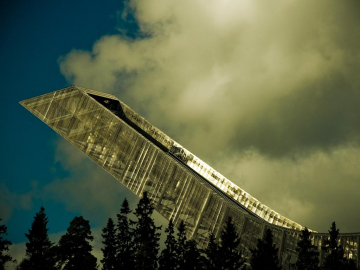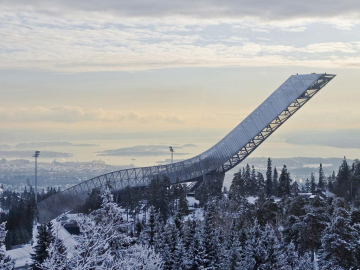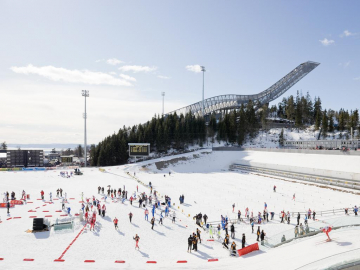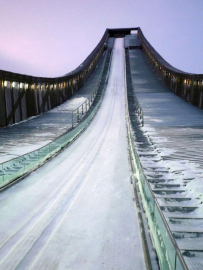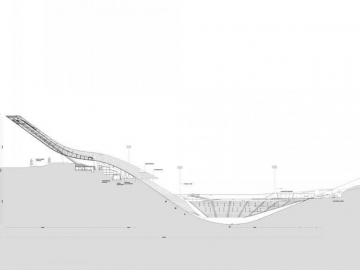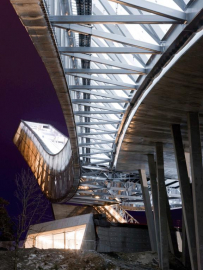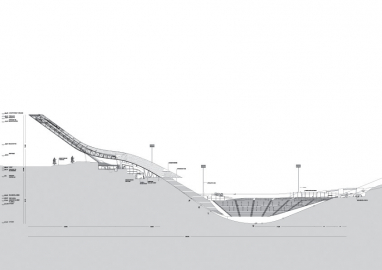New Holmenkollen Skijump
The New Holmenkollen Ski Jump: A Perfomative Project
145 years ago the first Norwegian took off from a hill, catapulting himself to the sky, creating a sport that would spread all over the world and captivate millions.
Today Oslo remains the undisputed capital of ski jumping, having had annual competitions at Holmenkollen since 1892, served the Olympics in 1952 and hosted several world championships.
The Holmenkollen site has been the cradle of evolution in ski jumping and the facility was revisited and improved more than twenty times. Its building history represents a form of record or architectural fossil of the disciplines progress.
As the city of Oslo will host the 2011 world championships, the facilities required a renovation beyond what the existing structures could manage.
Our submission won the international open competition held in 2007 against 104 proposals to redesign the jumping tower and the 40,000 seats arena.
Beyond fulfilling the disciplines requirements our project proposes two aspects we believe have led to its completion:
Symbiotic relationship between architecture and experience
The design aims at unifying the various elements present in a ski jump into one single expression, shape and action. Rather than having a series of dispersed pavilions on site, weve managed to combine them into one organism. The judges booths, the commentators, the trainers, the royal family, the VIPs, the wind screens, the circulations, the lobby, the entrance to the arena and the arena itself, the lounge for the skiers, the shop of souvenirs, the access to the existing museum, the viewing public square at the very top, EVERYTHING, is contained into the shape of the jump in a symbiosis of programs and experiences giving the jump an harmonic contextual relationship to the surrounding landscape.
The resulting simplicity of the solution improves the experience of the spectators and the focus of the skiers. Theres an impressive feeling of intimacy at Holmenkollen: both audience and jumpers are enclosed in the arms of the skijump in a form of an architectural embrace.
Iconographic dialogue between structure and city
Looking at the Olympic models of Barcelona, Sydney and Munich, architecture was at the forefront of redefining how the city was perceived. We believe that the Holmenkollen ski jump could liberate Oslo from regional perceptions and help leverage a more international status. The ski jump also invigorates the capital with an icon, adding to the citys collection of exemplary civic buildings like the new opera house and reinforcing the citys wave of regeneration.
There is another crucial aspect to this iconographic issue that our project emphasizes: from its strategic position, at the highest peak over the city, the structure offers the most breathtaking views of Oslo, the fjord and the region beyond. We have designed a public square, on top of the jump, literally a plaza, to let visitors experience Oslo from this exceptional vantage point. Its a new form of public space, using an unlikely architectural form as its host allowing for a dialogue between the city and its inhabitants.


